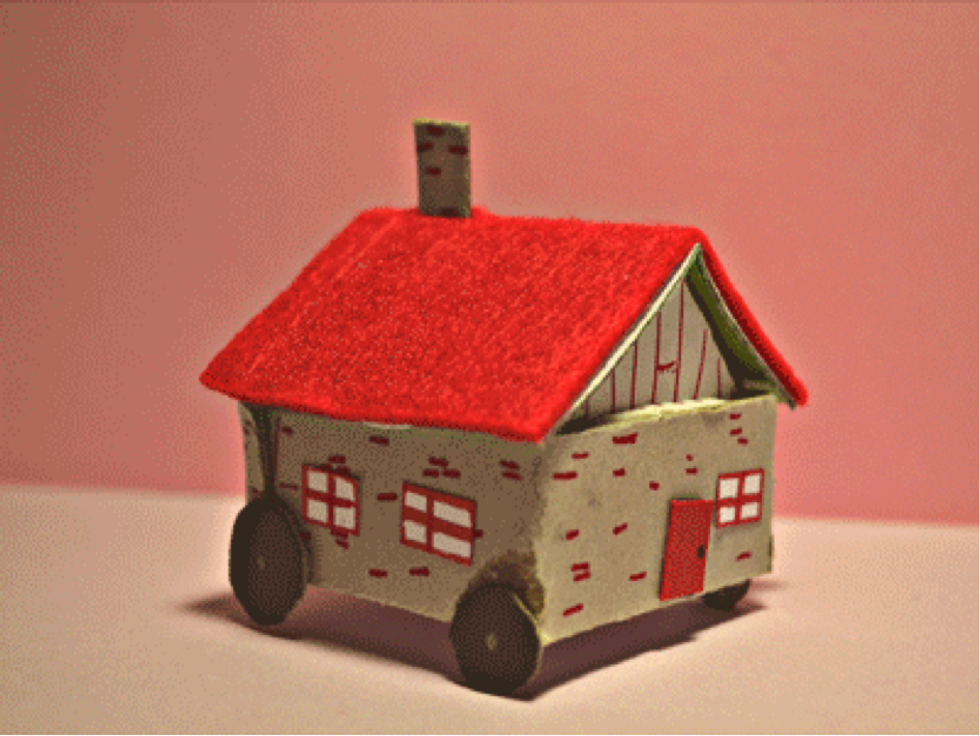According to US News, the average 2015 undergraduate student accumulates around $35,000 in debt by the time graduation rolls around. So what is a millennial to do in order to curb this crushing debt while also leaving a lighter carbon footprint? Do they sell a kidney on the black market? Do they panhandle? No, they buy a tiny house, of course! As of late, a new movement has emerged from the woodwork known as the Tiny House Movement. The general idea boils down to people choosing to live in--you guessed it--smaller houses. The reason for this varies from person to person, but ideally it is for people looking to lead a more minimalist and eco-friendly lifestyle. What better way to save money and help the environment for a budget conscious graduate?
So, what constitutes a tiny house?
Typically a Tiny House is not bigger than 500 sq. ft. with the average tiny home being 120 sq. ft. Some people build these smaller homes on trailers and drive them around the country to keep mobile and explore the world. This is a plus for those folks with a sense of wanderlust! Other tiny homes sit on a plot of land, RV parks, or in their friends and family’s backyard while remaining stationary. Many tiny homes are designed to look similar to small cabins with rustic interior designs. Imagine a downsized version of an Ikea inspired apartment: chic, trendy, and functional.
What about my stuff?
Oh, you mean that sweater your grandma bought you in 2005 when you were 9? Or the six picture frames, stencils, Crayola crayons, and sets of marbles for that Pinterest Project you wanted to do back in 2012? Yeah, they've got to go. The tiny house movement is not just about downsizing the size of your house; it means downsizing the number of things you have and de-cluttering your life so you can focus on living life to the fullest. Many Tiny House dwellers pare down the items they own to just the basic necessities (and a few small, cute decorations) to take away the stress of having to organize constantly and clean and take care of things they do not use on a regular basis.
So, why should you care?
Recently, the Tiny House Movement has given people from our generation the idea to live simpler lives and learn how to be debt free. The average tiny home costs between $15,000 and $65,000, whereas the average apartment costs $700-$3,000 per month (Or $8,400-$36,000 per year!). Furthermore, Tiny House living can reduce greenhouse gas emissions due to eco-friendly building, heating and cooling, and use of green energy (such as solar power) to create and maintain a home. As a result, living in a Tiny House can reduce after college debt, our carbon footprint, and the amount of useless junk that we hold on to so much. Doing this leads to healthier relationships, simpler living, and overall happiness.
Still, the Tiny House Life is not for everyone, but like everything it has its pros and cons. If you enjoy traveling, living within your means, being able to minimize your debt and stress, and owning your own house before the age of 30, perhaps the movement is for you. If you do not like the idea of your house being about the size of a large dorm room and mobile, maybe it is not for you. Nonetheless, this lifestyle offers an awesome environmentally (and wallet!) friendly alternative to regular housing after college that may be worth a shot to the people of our generation.
To learn more and to see if the Tiny Life is for you, I recommend the documentary TINY: A Story About Living Small, which explores the process of building a customized house and how to live the Tiny Life.







































